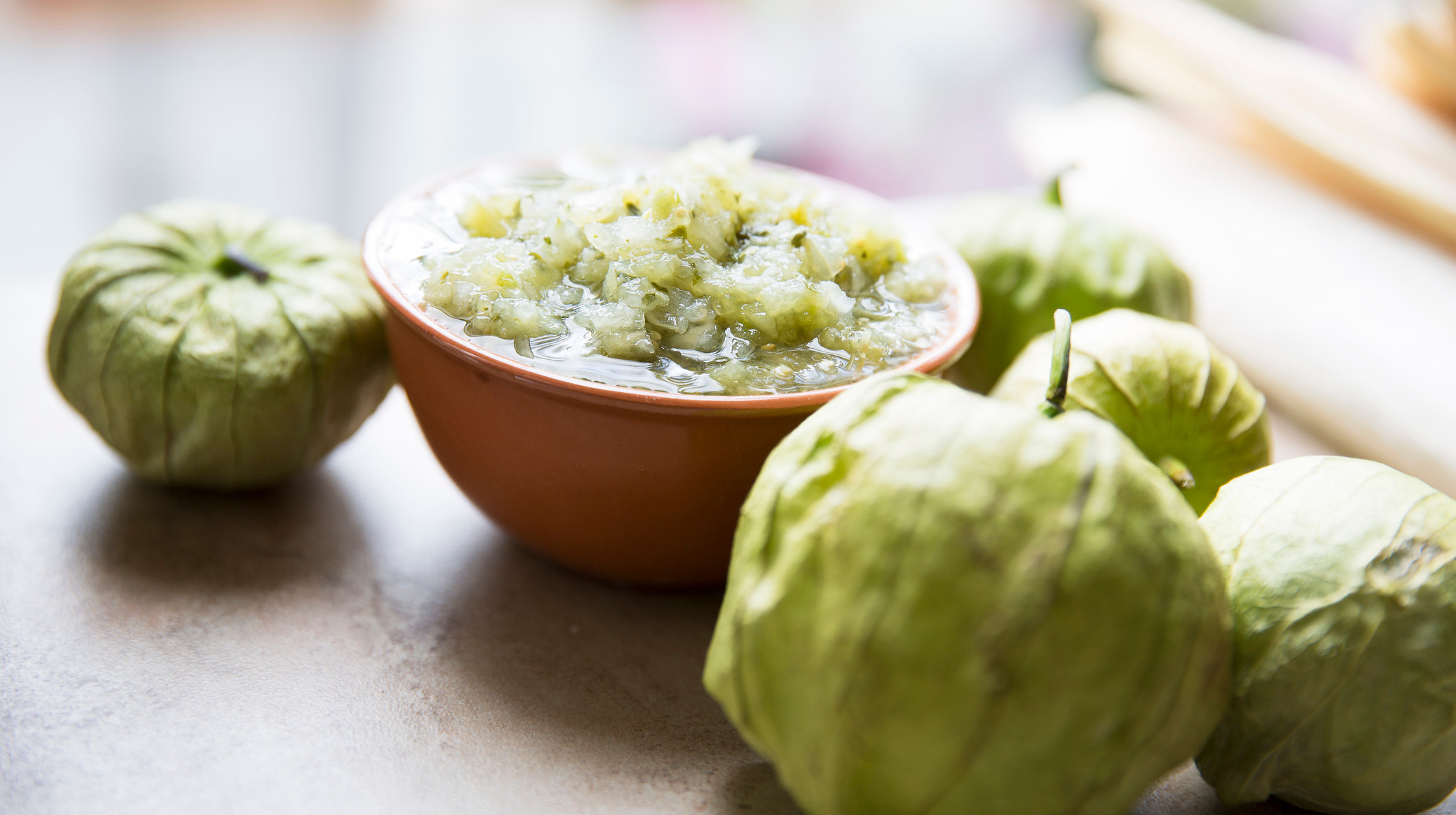How To Make Homemade Salsa Verde
Read, study, YouTube as much as you want, there are still surprises to growing your own fruits and vegetables. Over the three summers my boyfriend and I have been earnestly growing our garden, we've learned that what works in books isn't guaranteed to work in our backyard, and conversely, that certain plants grow like absolute weeds for us. In that latter category: Tomatillos.

I couldn't believe their exuberance last year, not just poking their way out of the ground but almost thrashing up toward the sun's rays, then exploding with lantern-like paper shells, each holding a tomatillo in progress. Once they'd ripened, we found ourselves inundated with the tiny green fruits, wondering how we'd possibly find enough applications for the bounty. We needn't have worried.
We made big batches of oven-roasted salsa verde, tweaking a basic tomatillo/onion/garlic/cilantro/jalapeno recipe to our liking, freezing containers for use all year long. I figured the tomatillo salsa would be a bright, acidic, lightly sweet counterpart to the standard tomato salsas at our summer parties, and it is. In his new cookbook Tu Casa Mi Casa, acclaimed Mexico City chef Enrique Olvera describes tomatillos as possessing a "faint jammy sweetness," which is a welcome variation from salsa roja. (Try charring the tomatillos in cast iron to get an earthy, smoky component.)
But its applications are much more varied. We use salsa verde to top nachos, swipe it inside steak and fish tacos, serve it alongside scrambled eggs, splash it into posole, and use it as the base for an astoundingly easy enchilada sauce: Start with a jar of the salsa and add chicken stock to it in a 2:1 salsa-to-broth ratio, then add leftover or store-bought rotisserie chicken. Simmer. Spoon the chicken into enchiladas, spread the sauce over it. Bake. Forgive yourself for eating the salsa straight from the jar with a spoon.

Cooked Salsa Verde
Adapted from Tu Casa Mi Casa: Mexican Recipes For The Home Cook by Enrique Olvera with Luis Arellano, Gonzalo Goût, Daniela Soto-Innes, and with a foreword by Peter Meehan
You can make cooked salsa by charring the ingredients over heat or simmering them in water. The flavor profile is obviously very different. Charring gives you a smoky concentrated flavor that is perfect for salsas used as condiments. Water-cooked salsas tend to be better options for stews or longer cooking times.
- 5 large tomatillos, husked and rinsed
- 1/4 large white onion
- 2 fresh serrano chiles, or to taste
- 1 garlic clove, unpeeled
- 1/2 cup chopped fresh cilantro
- Salt, to taste
Charred: Place a comal or frying pan over high heat. Place the tomatillos, onion, serranos, and garlic on the hot comal and char on all sides, about 20 minutes. Remove from the heat and cool to room temperature. Transfer all the charred ingredients to a molcajete or blender, add the cilantro and salt to taste, and blend until chunky. Serve at room temperature or store in an airtight container in the refrigerator for up to one week.
Simmered: Peel the garlic. In a medium pot, combine the tomatillos, onion, serrano, and garlic. Add enough water to cover the ingredients and simmer over medium heat until the tomatillos are a pale green, 10–15 minutes, taking care to not let the water boil so they don't burst. Drain and let cool to room temperature. Transfer to a blender and pulse until broken down. Add the cilantro (coriander) and salt to taste, and blend until smooth. You can serve right away or fry in a hot pot with some vegetable oil. Serve warm or at room temperature, or store in an airtight container in the refrigerator for up to one week, or in the freezer for up to one month.
Recipe reprinted with permission from Tu Casa Mi Casa: Mexican Recipes For The Home Cook by Enrique Olvera, copyright © 2019. Published by Phaidon.
